People with low levels of education and poor literacy skills have difficulty making themselves heard. This is particularly true for indigenous communities. Their ancestral knowledge and rights are often ignored by governments, mineral companies and others who wish to exploit their lands. However, it needn’t be like this. Working with local partners, CTA has helped to pioneer a process, known as Participatory 3-D Modelling, which is helping local communities not only to document the areas where they live, but influence the way decisions are made about land-use and tenure.
“Traditionally, maps were made by governments, and the data was controlled by governments,” says CTA’s Giacomo Rambaldi. “But there has been a huge change recently as civil society groups have acquired the ability to make their own maps and videos.” They have benefited from access to Google Earth and YouTube and participatory 3-D modelling as a way of creating accurate, geo-referenced maps.
The first CTA-supported modelling exercise in the Pacific was held in Fiji in 2005. The 11-day event in Lavuka focused on Ovalau Island, where local communities were suffering from the over-exploitation of their fishery grounds, especially by foreign fleets. During the first three days, 30 high-school students and six teachers constructed a 3-D model of the island with the assistance of 15 facilitators and trainees. Ninety men and women from 26 villages then ‘populated’ the model with mountains, roads, rivers, fishing grounds, croplands, cultural sites and other features. By the time they had finished, the model had 79 features and 83 places of cultural significance.
The model was subsequently used as a basis for an island-wide management plan and three districts management plans. The process identified 16 ‘taboo’ areas in which there is now total protection of marine life. Local people have also begun to clear ceremonial pathways which had become overgrown. During the course of three years of research, the Museum of Fiji only managed to identified 20 places of cultural significance – a quarter of the number identified by villagers during the modelling process.
In many ways, the process is as important as the finished article. “It helps people to visualise and localise their spatial knowledge, and this is very empowering,” says Giacomo. “And, of course, it enables them to make their case more persuasively.” In the past, indigenous communities might produce sketch maps laying claims to their land, but decisions-makers seldom took much notice. The 3-D models providing intricate details of landscape features and resource use are much harder to ignore.
Kenn Mondiai, who runs Partners with Melanesians, an NGO based in Papua New Guinea, was among those to benefit from training in Fiji. Since then he has played an important role in promoting participatory 3-D modelling across the Pacific. With support from the World Bank, he helped local communities on PNG’s Managalas Plateau, home to around 150 clans, to create a 3-D model of their ancestral lands. This was used as part of the evidence to promote Managalas Conservation Area, whose official recognition is anticipated around the time of going to press.
Mapping Land, Sea and Culture: an Award-winning Participatory 3D Modelling Process in Fiji from CTA on Vimeo.
In 2011, The Nature Conservancy hired Kenn to conduct trainings in the Solomon Islands. The modelling exercise at the coastal village of Boe Boe focused on climate change and its possible impact. The model showed the extent of the last tsunami in 2007 and recent king-tide levels that had inundated parts of the village. The community then used the model to discuss the potential impact of rises in sea-level and other climate-related events.
“The model showed the younger generation that we need to think about climate change,” reflected Winifred Piatamama after the exercise. “It’s important to realise that in a few years time the sea level won’t be the same as it is now.” Following discussions, the villagers decided that instead of building along the coastline, as they have done in the past, they would look towards the higher land further from the sea. In short, the model helped them to devise plans which will help them adapt to climate change.
Modelling the Future in Boe Boe Community, Solomon Islands from CTA on Vimeo.
According to Winifred, the modelling process was particularly important for the women in the community. “At the beginning it was a bit challenging for women, because they don’t raise their concerns, they are generally quiet,” she said. However, the modelling process encouraged them to share their views more openly. “When everyone contributes to the model, they share pride and ownership,” reflected Gabriel Kulwaum of The Nature Conservancy (TNC) in a short film about the Boe Boe exercise. “TNC or the government don’t own it.” The community does.
CTA was keen to encourage participatory 3-D modelling in the Caribbean, but was obliged to import expertise from elsewhere. In October 2012, the first Caribbean modelling exercise was held in Tobago, hosted by the Caribbean Natural Resources Institute (CANARI) and facilitated by Kenn Mondiai. This led to follow-up modelling workshops on Union Island and Granada.
Local voices in climate change adaptation - Union Island, Caribbean - Trailer from CTA on Vimeo.
According to Gillian Stanislaus of the Department of Natural Resources and Environment in Trinidad and Tobago, the Tobago 3-D model will help the authorities manage future developments more efficiently. “Because of the modelling process, we have a much greater depth of knowledge about the way in which the land is used and its significance for local people,” she says.
Terrence Phillips attended one of the modelling workshops – its focus was on adapting to climate change – as a representative of the Caribbean Regional Fisheries Mechanism. He was impressed. “I think this is a very useful tool,” he says. “The communities were able to describe what had happened to their marine resources in the past and the state of the resources now.” The modelling encouraged them to consider the possible impact of sea-level rises and climate change, and devise strategies to help them adapt. The modelling exercise helped to create a constructive dialogue between the government and the local community, ensuring that they work together effectively in future.
Africa’s first participatory 3-D mapping exercise took some 10 months to organise. Held in the village of Nessuit in Kenya’s Nakuru County, it was managed by Environmental Research Mapping and Information Systems in Africa (ERMIS-Africa), with financial and technical support from CTA. Over the course of 11 days in August 2006, some 120 men and women belonging to 21 Ogiek clans constructed a 3-D model of the Eastern Mau Forest Complex.
The Voice of the Ogiek from CTA on Vimeo.
The Mau Forest had suffered from decades of commercial logging and encroachment. These activities had destroyed much of the landscape, as well as many Ogiek cultural sites, and for some years the Ogiek had been attempting to assert their rights to the land in court. “The court cases had been dragging on, with no real resolution,” explains Julius Muchemi, director of ERMIS-Africa. “What the Ogiek needed was concrete evidence to support their claims, and the modelling exercise helped to provide that.”
The evidence was persuasive enough to convince the government of the Ogiek’s right to the land, and the need to protect the area from further degradation. When a conservation process was launched in 2007, all those occupying the forest apart from the Ogiek were evicted. Since then, ERMIS-Africa and its partners have produced the Ogiek Peoples Ancestral Territories Atlas. This provides the most comprehensive description to date about the Ogiek’s culture and their links to the land.
Among the organisations which supported the mapping exercise was the Indigenous Peoples of Africa Coordinating Committee (IPACC). According to its director, Nigel Crawhall, this was a key event in the life of IPACC. The mapping exercise, and CTA’s support for the organisation, led to a series of important developments for indigenous people, including IPACC’s engagement with the UN Framework Convention on Climate Change and the launching of a multi-country training programme on climate change mitigation and adaptation.
“From a professional perspective,” said Dr Crawhall, in a written summary about the impact of CTA, “the relationship with CTA has brought important changes, new tools and opportunities... Exposure and partnering with CTA has transformed the work, practice and knowledge of Africa’s only regional indigenous peoples network, it has touched the lives of people in more than a dozen countries, it has created new career and advocacy opportunities for indigenous leaders, and it has opened new horizons for me professionally.”
Since the Mau Forest mapping exercise, CTA has supported similar initiatives in Ethiopia, Gabon, Chad and Uganda. Supported by an e-handbook published in English, French, Spanish, Portuguese and Amharic, and a vibrant online community, modelling exercises have also taken place in other parts of Kenya, the Democratic Republic of Congo, Ghana and Morocco and many other countries as shown on the map below.
“Traditionally, maps were made by governments, and the data was controlled by governments,” says CTA’s Giacomo Rambaldi. “But there has been a huge change recently as civil society groups have acquired the ability to make their own maps and videos.” They have benefited from access to Google Earth and YouTube and participatory 3-D modelling as a way of creating accurate, geo-referenced maps.
The first CTA-supported modelling exercise in the Pacific was held in Fiji in 2005. The 11-day event in Lavuka focused on Ovalau Island, where local communities were suffering from the over-exploitation of their fishery grounds, especially by foreign fleets. During the first three days, 30 high-school students and six teachers constructed a 3-D model of the island with the assistance of 15 facilitators and trainees. Ninety men and women from 26 villages then ‘populated’ the model with mountains, roads, rivers, fishing grounds, croplands, cultural sites and other features. By the time they had finished, the model had 79 features and 83 places of cultural significance.
The model was subsequently used as a basis for an island-wide management plan and three districts management plans. The process identified 16 ‘taboo’ areas in which there is now total protection of marine life. Local people have also begun to clear ceremonial pathways which had become overgrown. During the course of three years of research, the Museum of Fiji only managed to identified 20 places of cultural significance – a quarter of the number identified by villagers during the modelling process.
In many ways, the process is as important as the finished article. “It helps people to visualise and localise their spatial knowledge, and this is very empowering,” says Giacomo. “And, of course, it enables them to make their case more persuasively.” In the past, indigenous communities might produce sketch maps laying claims to their land, but decisions-makers seldom took much notice. The 3-D models providing intricate details of landscape features and resource use are much harder to ignore.
Across the Pacific
Mapping Land, Sea and Culture: an Award-winning Participatory 3D Modelling Process in Fiji from CTA on Vimeo.
In 2011, The Nature Conservancy hired Kenn to conduct trainings in the Solomon Islands. The modelling exercise at the coastal village of Boe Boe focused on climate change and its possible impact. The model showed the extent of the last tsunami in 2007 and recent king-tide levels that had inundated parts of the village. The community then used the model to discuss the potential impact of rises in sea-level and other climate-related events.
“The model showed the younger generation that we need to think about climate change,” reflected Winifred Piatamama after the exercise. “It’s important to realise that in a few years time the sea level won’t be the same as it is now.” Following discussions, the villagers decided that instead of building along the coastline, as they have done in the past, they would look towards the higher land further from the sea. In short, the model helped them to devise plans which will help them adapt to climate change.
Modelling the Future in Boe Boe Community, Solomon Islands from CTA on Vimeo.
According to Winifred, the modelling process was particularly important for the women in the community. “At the beginning it was a bit challenging for women, because they don’t raise their concerns, they are generally quiet,” she said. However, the modelling process encouraged them to share their views more openly. “When everyone contributes to the model, they share pride and ownership,” reflected Gabriel Kulwaum of The Nature Conservancy (TNC) in a short film about the Boe Boe exercise. “TNC or the government don’t own it.” The community does.
Training in the Caribbean
Local voices in climate change adaptation - Union Island, Caribbean - Trailer from CTA on Vimeo.
According to Gillian Stanislaus of the Department of Natural Resources and Environment in Trinidad and Tobago, the Tobago 3-D model will help the authorities manage future developments more efficiently. “Because of the modelling process, we have a much greater depth of knowledge about the way in which the land is used and its significance for local people,” she says.
Terrence Phillips attended one of the modelling workshops – its focus was on adapting to climate change – as a representative of the Caribbean Regional Fisheries Mechanism. He was impressed. “I think this is a very useful tool,” he says. “The communities were able to describe what had happened to their marine resources in the past and the state of the resources now.” The modelling encouraged them to consider the possible impact of sea-level rises and climate change, and devise strategies to help them adapt. The modelling exercise helped to create a constructive dialogue between the government and the local community, ensuring that they work together effectively in future.
Africa's first
The Voice of the Ogiek from CTA on Vimeo.
The Mau Forest had suffered from decades of commercial logging and encroachment. These activities had destroyed much of the landscape, as well as many Ogiek cultural sites, and for some years the Ogiek had been attempting to assert their rights to the land in court. “The court cases had been dragging on, with no real resolution,” explains Julius Muchemi, director of ERMIS-Africa. “What the Ogiek needed was concrete evidence to support their claims, and the modelling exercise helped to provide that.”
The evidence was persuasive enough to convince the government of the Ogiek’s right to the land, and the need to protect the area from further degradation. When a conservation process was launched in 2007, all those occupying the forest apart from the Ogiek were evicted. Since then, ERMIS-Africa and its partners have produced the Ogiek Peoples Ancestral Territories Atlas. This provides the most comprehensive description to date about the Ogiek’s culture and their links to the land.
Among the organisations which supported the mapping exercise was the Indigenous Peoples of Africa Coordinating Committee (IPACC). According to its director, Nigel Crawhall, this was a key event in the life of IPACC. The mapping exercise, and CTA’s support for the organisation, led to a series of important developments for indigenous people, including IPACC’s engagement with the UN Framework Convention on Climate Change and the launching of a multi-country training programme on climate change mitigation and adaptation.
“From a professional perspective,” said Dr Crawhall, in a written summary about the impact of CTA, “the relationship with CTA has brought important changes, new tools and opportunities... Exposure and partnering with CTA has transformed the work, practice and knowledge of Africa’s only regional indigenous peoples network, it has touched the lives of people in more than a dozen countries, it has created new career and advocacy opportunities for indigenous leaders, and it has opened new horizons for me professionally.”
Since the Mau Forest mapping exercise, CTA has supported similar initiatives in Ethiopia, Gabon, Chad and Uganda. Supported by an e-handbook published in English, French, Spanish, Portuguese and Amharic, and a vibrant online community, modelling exercises have also taken place in other parts of Kenya, the Democratic Republic of Congo, Ghana and Morocco and many other countries as shown on the map below.

.JPG)
.JPG)
.JPG)


.JPG)
.JPG)
.JPG)
.JPG)
.JPG)
.JPG)
.JPG)
.JPG)

.JPG)
.JPG)
.JPG)
.JPG)
.JPG)
.JPG)
.JPG)
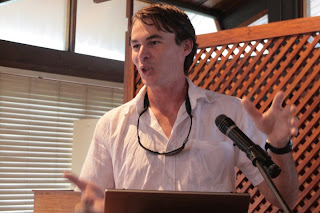.JPG)
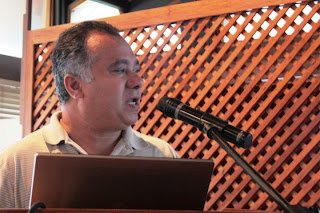.JPG)
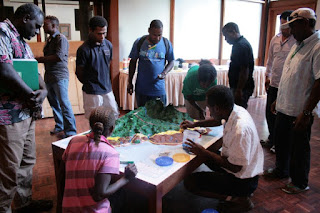.JPG)
.JPG)
.JPG)
.JPG)
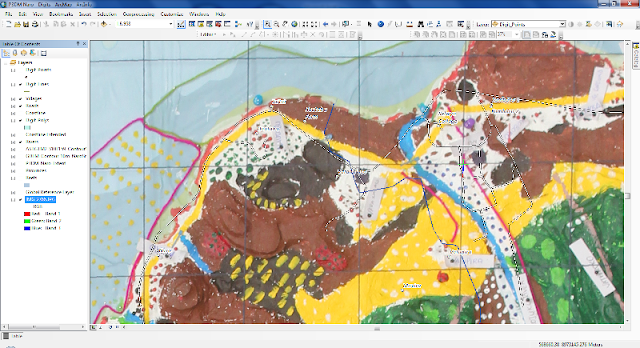
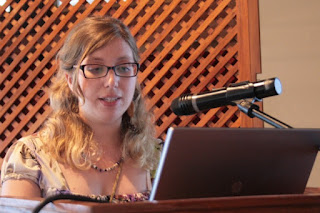.JPG)
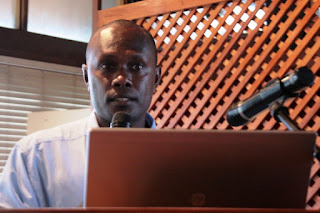.JPG)
.JPG)
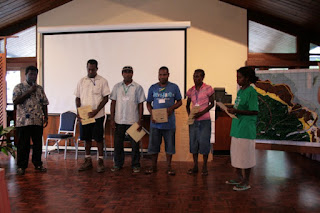.JPG)